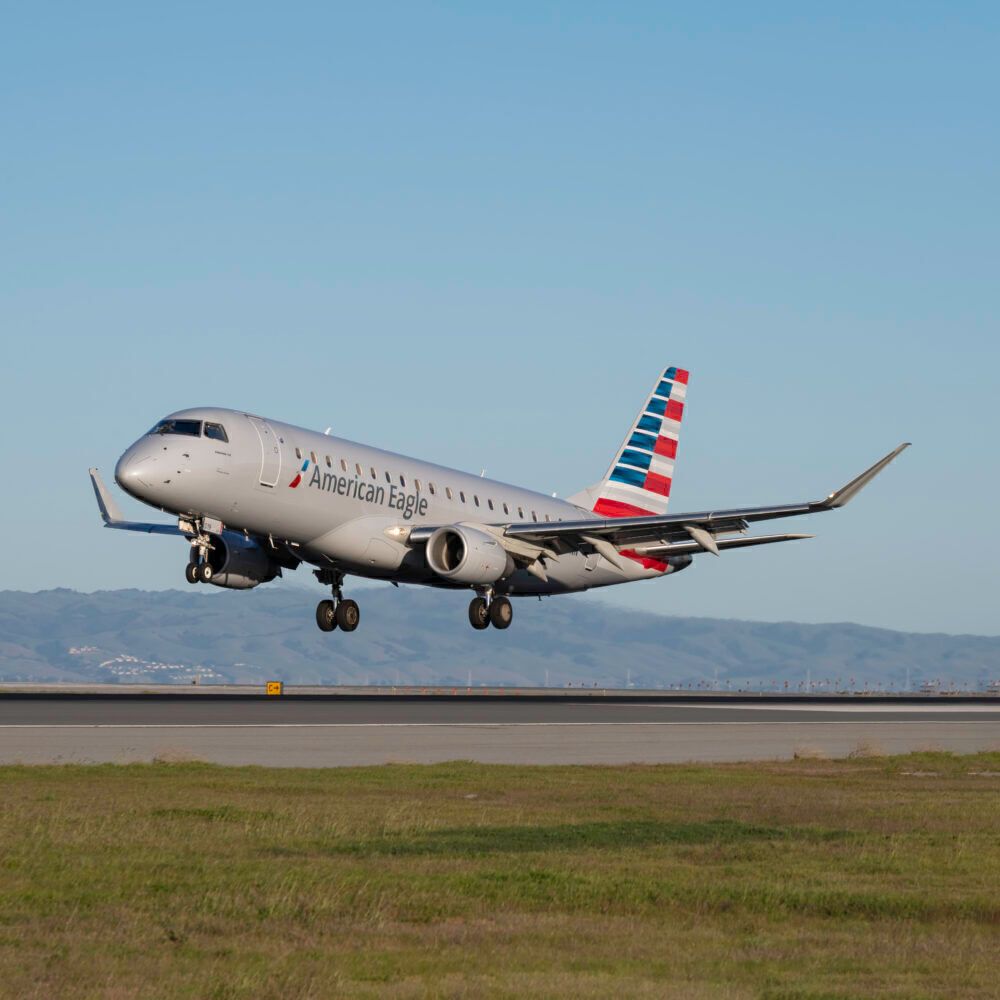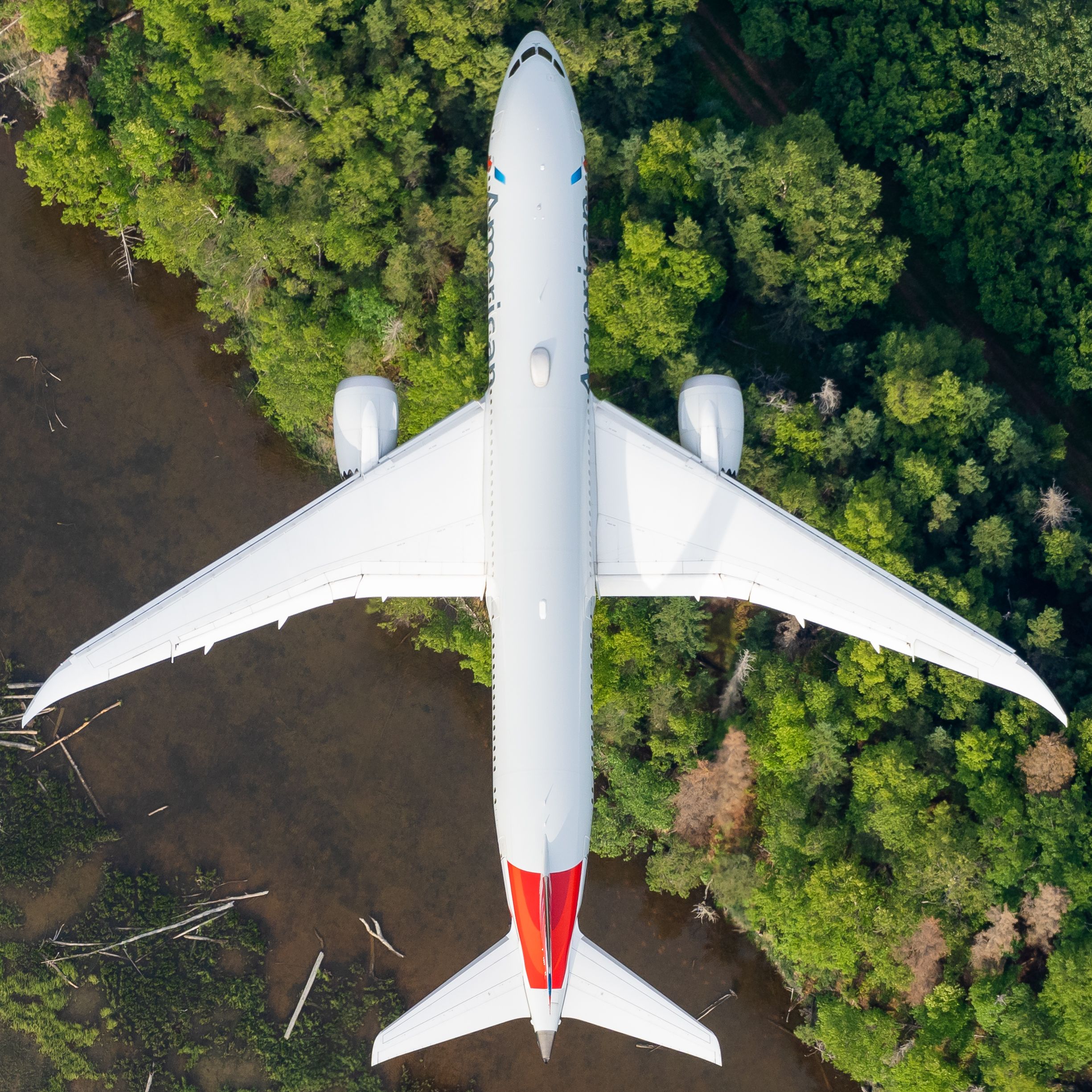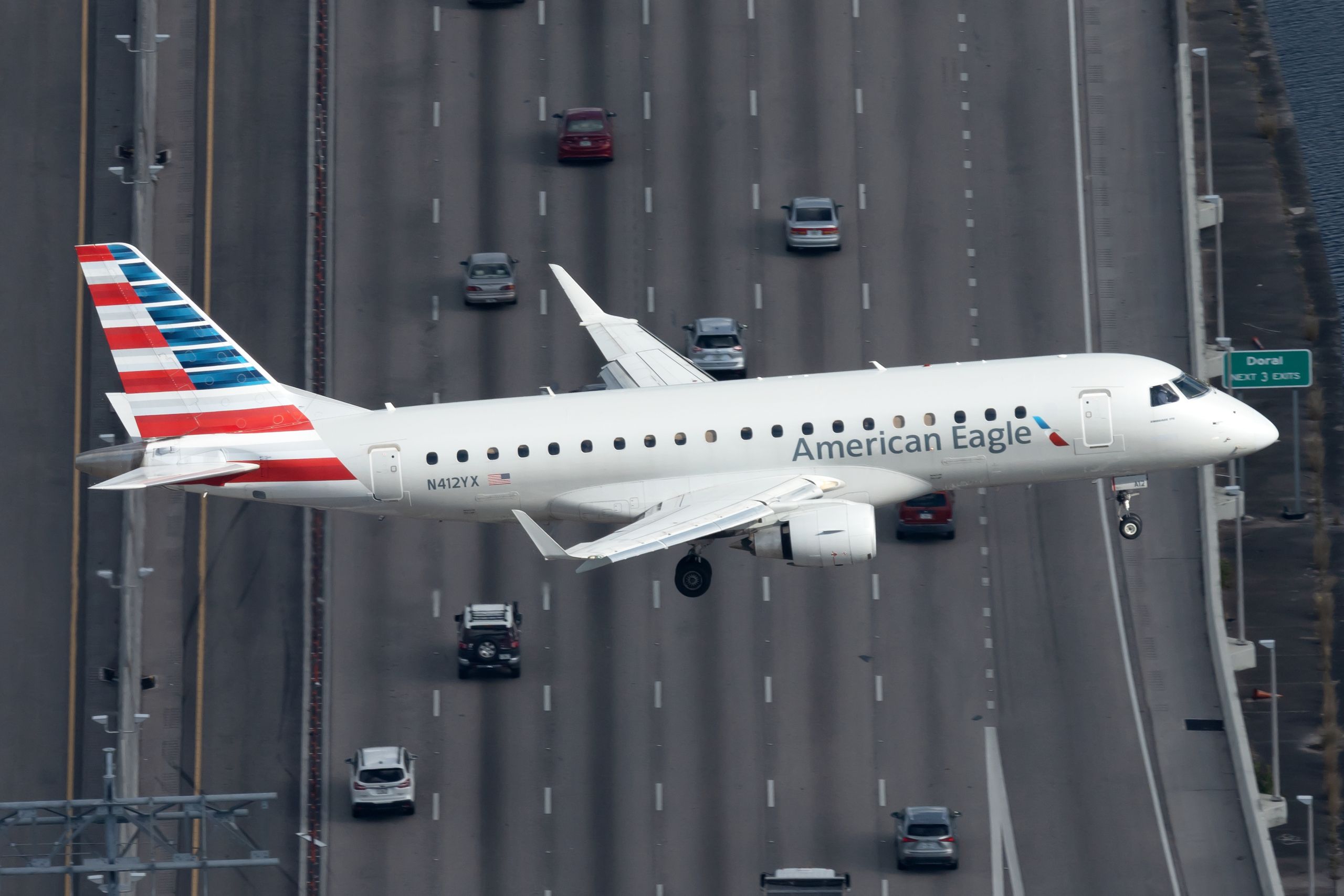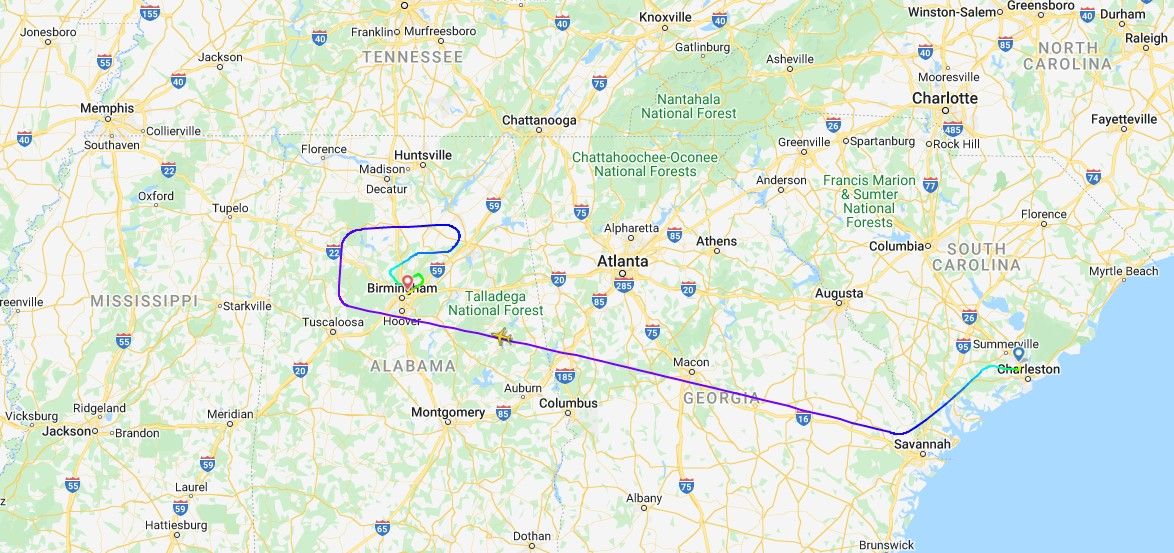An American Eagle service operated by an Envoy Air Embraer E175 took an eventful turn yesterday when it lost one of its winglets in flight. The affected aircraft was able to land safely, but did have to divert to get on the ground sooner than had it continued to its destination. Let's take a look at how the incident panned out.
The flight in question
American Airlines flight AA3729 is a scheduled domestic service that originates at Charleston International Airport (CHS) in South Carolina. Like many of the carrier's feeder flights, it is operated under the American Eagle brand by Envoy Air. Its destination is Dallas/Fort Worth International (DFW), which is AA's largest hub.
Interestingly, the flight number applies to services in both directions. However, the incident that occurred yesterday involved a Charleston-Dallas service. According to data from FlightRadar24.com, this three-hour hop has a scheduled departure time of 17:50. Meanwhile, its arrival into DFW is set to take place at 19:54 local time.
AA has a monopoly on the Charleston-Dallas/Fort Worth route, with some of its flights being mainline services, and others operating under the American Eagle brand. Southwest Airlines also has a presence on this corridor, but flies to the smaller Love Field (Love Field). DFW was Charleston's fifth-busiest route in 2020/21.
Stay informed: Sign up for our daily and weekly aviation news digests.
What happened?
Yesterday's Charleston-Dallas iteration of American flight AA3729 began largely uneventfully, although departure took place 20 minutes late, at 18:10. After departing to the southwest, the flight made a right turn once over Georgia and headed northwest over Alabama. It was at this stage that things took an unexpected turn.
According to The Aviation Herald, the flight was cruising at 36,000 feet when it encountered turbulence rated as 'moderate to severe.' The strength of this was such that, as seen in the tweet below, the aircraft lost its right-hand winglet. The crew advised air traffic control of this, before opting to make a diversion.
This took the flight to Birmingham–Shuttlesworth International (BHM), where it landed safely on the facility's 3,660-meter runway 24. This took place at around 18:45 local time, approximately 25 minutes after the flight left its cruising altitude, and 95 minutes after departing Charleston. The diversion led to significant delays.
The airline industry is always full of new developments! What aviation news will you check out next?
The aircraft involved
The Embraer E175 that had to make the aforementioned diversion to Birmingham bears the registration N233NN. According to data from ch-aviation.com, this 76-seat regional jet is six years old, having been delivered to Envoy Air in May 2016. At the time of writing, it had not flown again since making the diversion.
For the diverted passengers, a replacement aircraft was dispatched to Birmingham to bring them to Dallas. They ultimately reached the Texan hub with a delay of just under four hours, at 23:44 local time. The replacement E175 bears the registration N246NN, and is slightly younger, at 5.4 years old (delivered December 2016). Simple Flying has contacted American for further information on the incident.
What do you make of this incident? Have you ever been onboard a flight that has made such a diversion? Let us know your thoughts and experiences in the comments!
Source: The Aviation Herald




